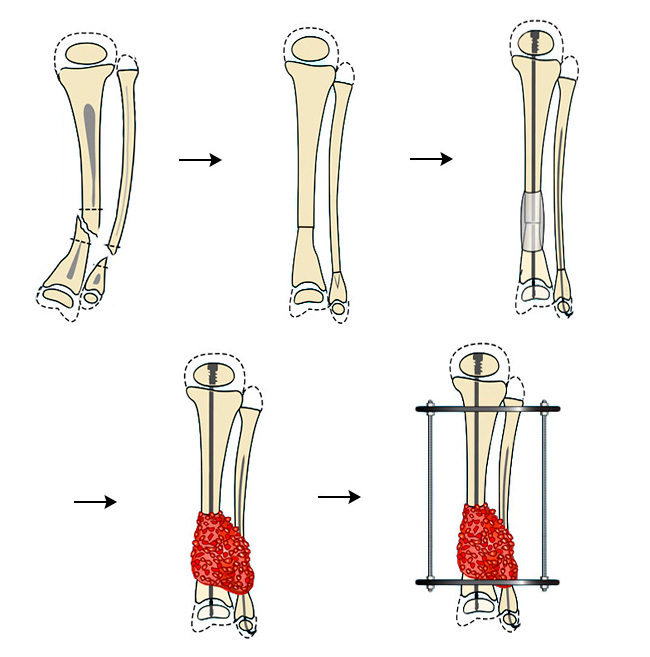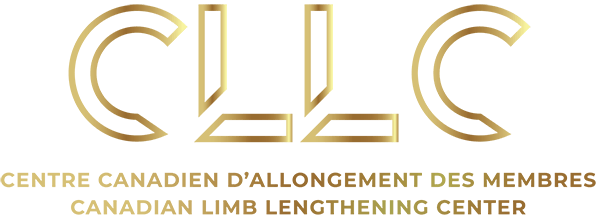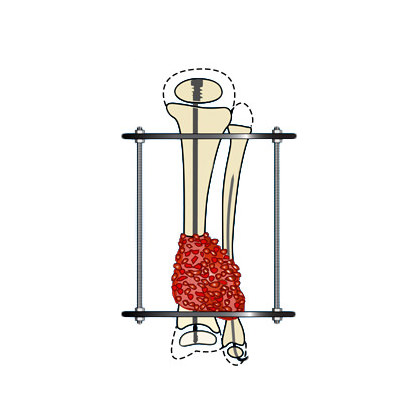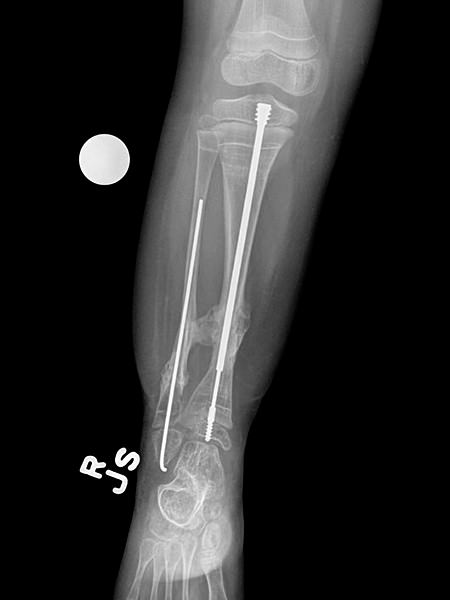Congenital pseudarthrosis of the tibia (CPT) refers to non-union of a tibial fracture. A pseudarthrosis is defined as a “false joint” and is a break in the bone that fails to heal on its own. It stems from the periosteum being abnormal and preventing proper bone healing. To treat this condition, we can use combined internal and external fixation techniques with periosteal grafting (and/or tibia-fibular synostosis). The periosteum is a membrane that covers the outer surface of all bones. Periosteal grafting involves harvesting periosteum from other bones in the body, such as the ilium (upper portion of the hip bone and pelvis), and using it to heal the fracture of the tibia.
Indications / Candidacy
Congenital pseudarthrosis of the tibia (CPT) is a shin bone fracture in children that has not healed in a patient born with this condition. It is often associated with bowing of the tibia that eventually fractures and then does not heal. The condition normally becomes apparent before a child turns two years old but the fracture can occur later in childhood. Congenital pseudarthrosis of the tibia is typically identified with X-rays and physical examination. In most cases the child gets a shin bone fracture that happens spontaneously, or as a result of minor trauma. For patients with CPT the fracture fails to achieve union, and refracture can be experienced.
Good Candidates for Combined internal and external fixation techniques with periosteal grafting may have:
- Fracture that does not heal
- Abnormal periosteum that prevents proper bone healing
- Instability and mobility at fracture site
- Diagnosed with neurofibromatosis (NF-1), a genetic predisposition to CPT


Treated Conditions
The Canadian Limb Lengthening Center offers a team of experienced surgeons, nurses and physiotherapists that make patients feel supported throughout their entire treatment process. Our ability to treat complex orthopedic conditions with a holistic approach gives our patients the best possible outcomes. We pride ourselves in providing highly specialized, expert care. To learn more about Anterolateral bowing of tibia of the Tibia (CPT) and other congenital limb deficiencies, follow the links below:
Surgical Technique
- Patient is placed in supine position with elevation of the lower limb.
- An incision is made to access the tibia and fibia.
- Extra care is taken to avoid injury to the anterior tibial artery and posterior tibial neurovascular bundle
- Abnormal periosteum is removed from the tibia and fibula and the thinner ends of the tibia and fibula are slightly trimmed
- The tibia and fibula are stabilized using intramedullary rods (typically telescopic rods) and wires during surgery
- Healthy periosteum and a bone are harvested from the pelvis and are placed in between and around the tibia and fibula bones
- In some cases, the graft is placed between the tibia and fibula along the interosseous membrane to create a union between the two bones to help create strong bony union and prevent re-fracture.
- Often, the addition of an external fixator is applied to the leg to provide rotational stability and to compress the bone ends while they heal.
- Alternatively, an internal plate can also be used to control and maintain alignment of the limb.

Results
Treatment of CPT can be complex and require multiple surgeries. Successful treatment lead to very functional outcomes for our patients who are able to live healthy, active lifestyles. Even after solid healing, there is still a risk for additional fractures. In some cases, a secondary surgery may be needed to help with deformity correction, equalization of LLD, or treatment of refracture. After skeletal maturity, the bone becomes more normal and refracture is less likely.

Potential Complications
As with any surgical procedure, combined internal and external fixation techniques with periosteal grafting can have difficulties and complications. Our team of specialist can address these concerns while finding solutions that will continue to provide treatment and care for your child’s condition. Complications and side effects may include:
- Failure to achieve union
- Refracture
- Deformity
- Leg length discrepancy (LLD)
- Ankle stiffness
- Foot deformity
AM I A CANDIDATE?
Are you experiencing an orthopedic condition and would like to improve your physical capabilities?
Or you simply would like to achieve your long-lasting dream of improving your height?
Let us help you achieve your optimal health and wellness in a professional setting.
Let’s open up a discussion to help you achieve your goals.




Highly specialized expert care at CLLC
At the Canadian Limb Lengthening Centre we offer complex deformity correction and limb lengthening surgeries performed by experienced surgeons with the most up to date technologies. When it comes to your care, and treatment of deformity and limb length discrepancy, our surgeons have extensive training and experience.






